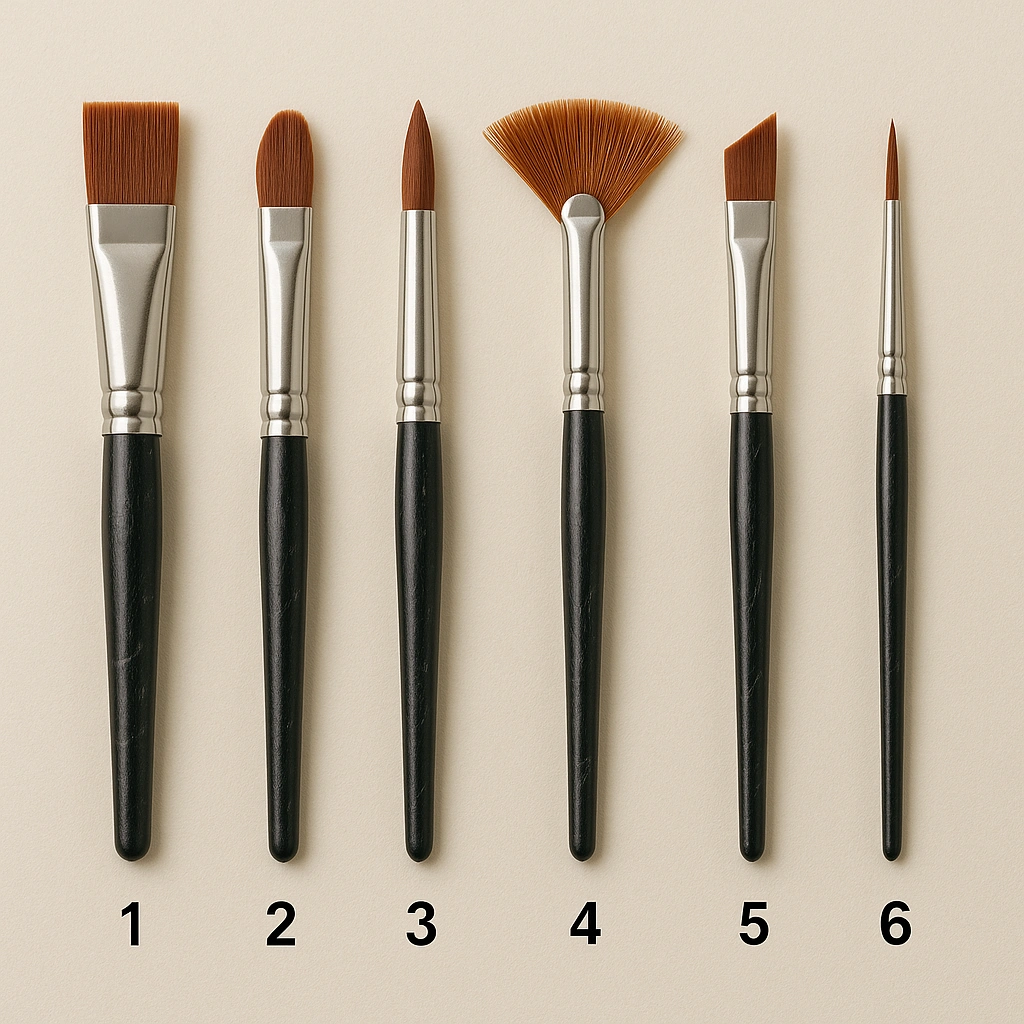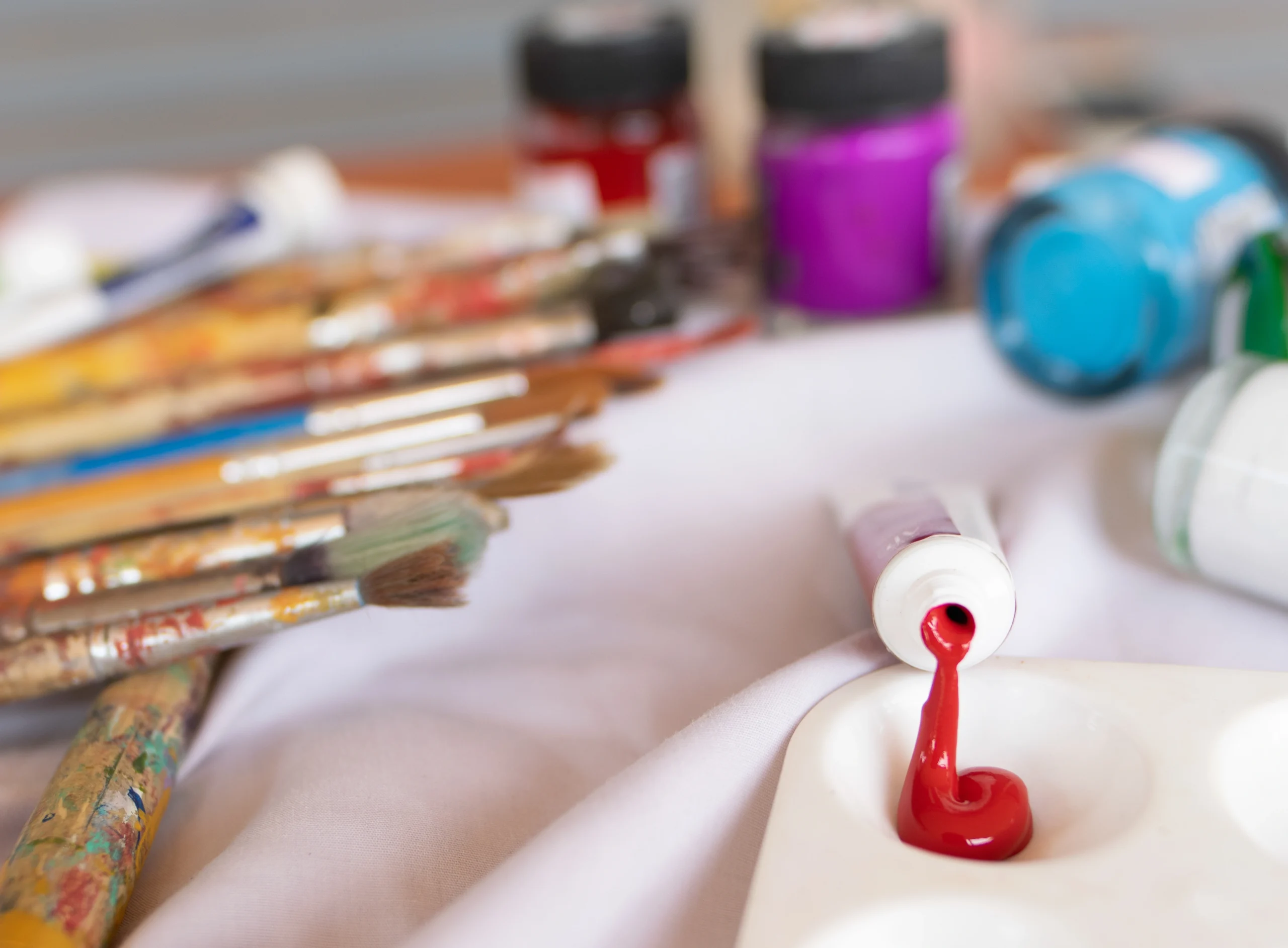Introduction
If you’re starting out in the world of canvas painting, choosing the right paint and brushes can seem like a difficult task. However, understanding the available options can make this choice easier and improve your results. Each type of paint and brush offers different characteristics and effects, making them ideal for creating specific painting styles. In this guide, we will explore the main types of paints and brushes, their features, and how to use them effectively.
Types of Paints for Canvas
Paints are the most important element in any painting. They can directly influence the finish, durability, and style of the work. Below, we detail the most common types of paints used in canvas painting: oil, acrylic, and gouache.
Oil Paint
- Description: Oil paint is one of the oldest and most traditional types of paint used in art. It consists of pigments mixed with oils, such as linseed oil. This combination creates a slow-drying paint that provides a rich, smooth texture.
- Characteristics:
- Slow drying: This allows the artist more time to work on layers and make corrections, making it ideal for fine details.
- Vibrant colors: Oil paint tends to create deep, rich, and glossy finishes with intense colors.
- Requires solvents: Oil paint must be diluted with solvents (such as turpentine or linseed oil), which can release toxic fumes and strong odors, requiring good ventilation.
- Common Uses: Classical works, realistic portraits, and landscapes with many layers. Artists often use oil paint to create light and shadow effects with refined details.
Acrylic Paint
- Description: Acrylic paint is one of the most versatile and fast-drying paints. It consists of pigments suspended in an acrylic polymer base, which makes it water-soluble.
- Characteristics:
- Quick drying: Unlike oil paint, acrylic paint dries quickly, allowing for faster layering, but it can be challenging for artists who prefer a slower drying time.
- Versatility: Acrylic paint can mimic the texture of other paints like watercolor or oil, depending on how it’s diluted.
- Durability: One of the major benefits of acrylic paint is its durability. It does not yellow over time and is resistant to light and wear.
- Common Uses: Modern art, abstract paintings, murals, and quick illustrations. Acrylic paint is ideal for those who like to work quickly without worrying about drying time.
Gouache Paint
- Description: Gouache paint is similar to watercolor but with more pigment and greater opacity. It is made from gum and pigments and can be diluted with water.
- Characteristics:
- Opaque finish: Gouache has a matte texture and covers surfaces well, making it great for achieving solid, non-glossy finishes.
- Reacts to water: Once dry, gouache can be reactivated with water, allowing artists to make changes without affecting the original finish.
- Smaller tubes: Gouache is usually sold in smaller tubes and can be more expensive per volume compared to acrylic paint.
- Common Uses: Illustrations, posters, graphic design, and works where opacity is needed. Graphic artists and illustrators often choose gouache for its ease of use and vibrant finish.
Paint Comparison
| Type | Pros | Cons |
|---|---|---|
| Oil | Rich colors, allows refined details, slow drying | Slow drying, requires solvents, strong odor |
| Acrylic | Dries quickly, versatile, no solvents needed | Can crack with thick layers, less time for mixing |
| Gouache | Opaque coverage, ideal for large areas | Less durability, reacts to water, expensive |
Types of Brushes for Canvas Painting
Choosing the right brush is just as important as choosing the right paint. The brush is the tool that allows the artist to create details, textures, and effects on the canvas. Here are the main types of brushes and their characteristics.
Round Brush
- Description: The round brush has a sharp point, making it ideal for fine details and precise lines. It can come in small to large sizes, depending on the artist’s needs.
- Recommended Use: The round brush is perfect for fine details and delicate lines. It’s often used for painting outlines and working on specific areas, such as eyes in a portrait or small parts of a flower.
- Common Uses: Outlines, facial details in portraits, small areas like flowers or tiny leaves.
Flat Brush
- Description: The flat brush has straight bristles and a flat head. It is highly versatile and can be used for both large areas and details.
- Recommended Use: The flat brush is ideal for filling in large areas and creating straight strokes. It’s excellent for painting backgrounds and creating smooth gradients.
- Common Uses: Skies, backgrounds, wide areas like fields and landscapes.
Filbert Brush (Cat’s Tongue)
- Description: The filbert brush has an oval shape, which combines the benefits of both round and flat brushes. It’s great for blending and smooth strokes.
- Recommended Use: This brush is perfect for painting organic and curved shapes, as its rounded tip makes it easier to create smooth transitions between colors.
- Common Uses: Clouds, flowers, leaves, and other curved and natural shapes.
Fan Brush
- Description: The fan brush has bristles arranged in a fan shape. This design makes it ideal for creating natural textures and special effects.
- Recommended Use: It is mostly used for creating soft textures and for background work. It can be used to make effects like grass, leaves, or other natural textures.
- Common Uses: Grass, leaves, background effects, smooth transitions.
Angular Brush
- Description: The angular brush has bristles cut at an angle, making it easier to create sharp lines and details in hard-to-reach areas.
- Recommended Use: The angular brush is ideal for working with corners and difficult-to-reach areas, such as the edges of buildings or the contours of objects.
- Common Uses: Corners, architectural details, sharp-edged leaves.
Liner/Script Brush
- Description: The liner brush is long and thin, with bristles that allow for fine, continuous strokes.
- Recommended Use: This brush is perfect for fine lines, delicate details, and continuous outlines.
- Common Uses: Text, thin branches, fine contours in detailed paintings.

Brush Image Legend
- Flat Brush – Ideal for backgrounds and straight strokes
- Filbert Brush – Smooth blending in curved shapes
- Round Brush – Fine details and thin strokes
- Fan Brush – Natural textures
- Angular Brush – Precision in corners
- Liner/Script Brush – Fine lines and details
How to Choose the Right Brush and Paint for You
Choosing the right brush and paint depends on the style and technique you want to explore. Here are some tips to help you make the right choice:
- Compatibility Between Brush and Paint: Acrylic paints generally work well with synthetic brushes, while oil paints are often better suited for natural bristle brushes.
- Brush Size and Shape: Larger brushes are ideal for covering wide areas, while smaller brushes are better for detail work. A good beginner’s brush set should include a round brush, a flat brush, and a small liner.
- Color and Layers: If you are using oil or acrylic paint, a filbert brush may be advantageous, as it allows you to create smooth transitions between colors.
Care for Materials
To ensure the longevity of your brushes and paints, it’s important to follow some simple care tips:
- Cleaning: Wash brushes immediately after use. Acrylic brushes can be cleaned with water, while oil brushes should be cleaned with solvents followed by soap and water.
- Drying: Allow brushes to dry with the bristles facing down or in an appropriate stand to avoid deforming them.
- Storage: Store brushes upright in a case or holder, and keep paint tubes tightly sealed to prevent them from drying out or becoming contaminated.
Choose with Confidence and Start Painting!
Now that you know the basics about types of paints and brushes for canvas painting, it’s time to start practicing. Remember, painting is a journey, and over time, you will discover which combination of materials works best for your unique style.

